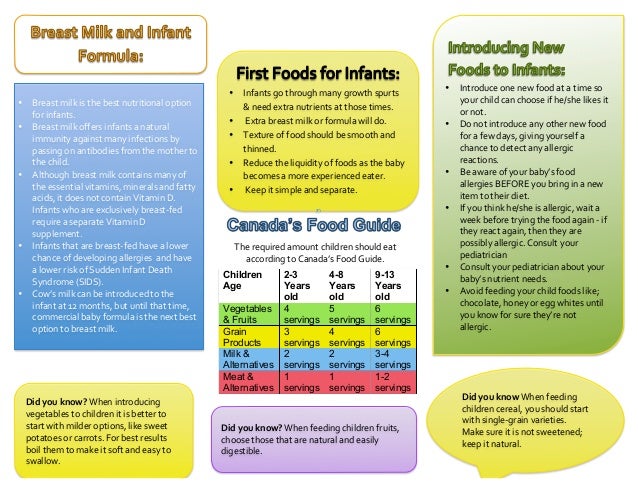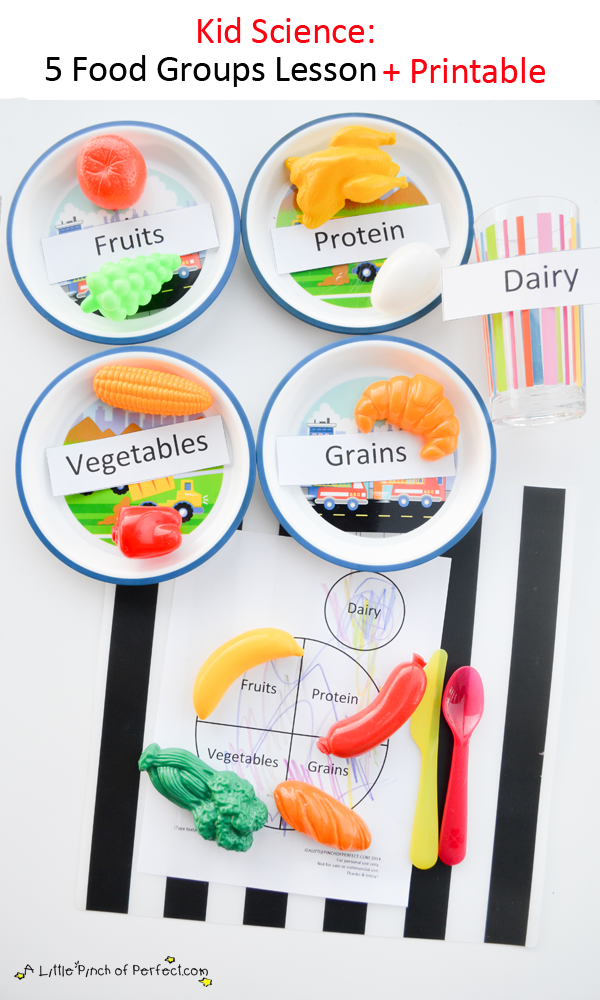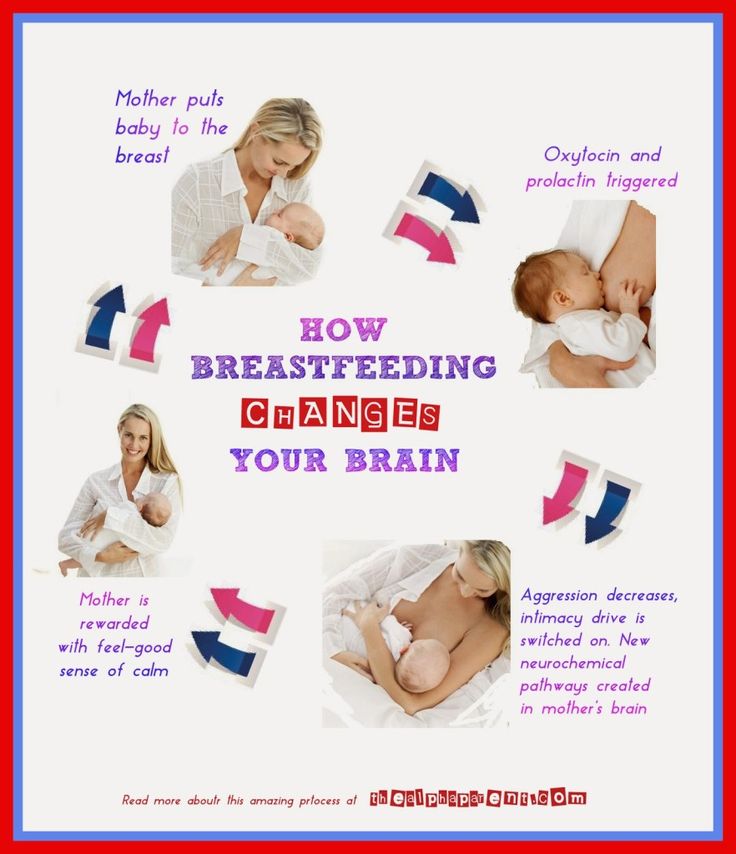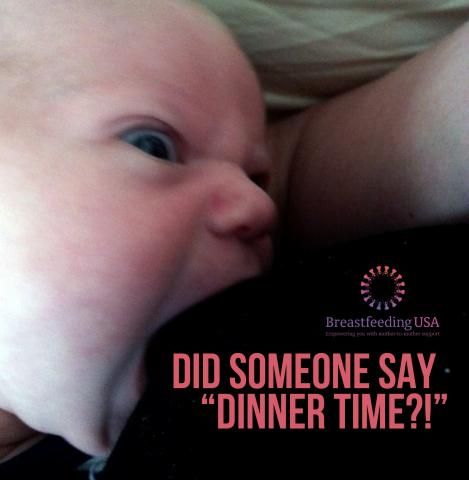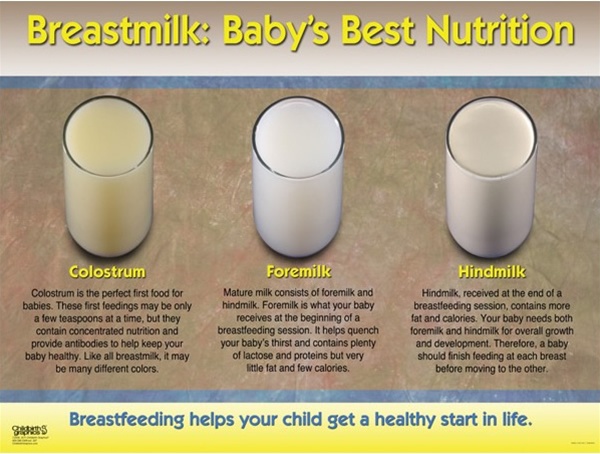Baby food allergy chart
Baby Food Allergy, Dairy Allergy, Soy Allergy, Infant and Baby Food Allergy Information and Homemade Baby Food
Baby Food & Allergies – All about Baby Food Allergies, How to Prevent & Identify Food Allergies
Allergies and Baby Food – Learn about baby food allergies and how to identify foods that may cause allergies
The “4 Day Wait Rule” and Allergies:
It is important to follow the “four day wait” rule when introducing your baby to new solid foods and even more important if your family has a history of food allergies. When you introduce a new food over the course of several days, you are better able to determine exactly how your baby is reacting to that food. As mentioned, this is most important if you and/or your family members have a history of food allergies.
Following the four day wait rule and introducing new foods one at a time will also enable you to easily begin an “elimination diet”. If you suspect your infant has had an adverse reaction to a new food, you will have just a few foods to look to as the culprit. While we think the “4 day wait rule” is important, many parents don’t wait between introducing foods; it is up to you to decide if you want to follow the “wait” rule.
Is Waiting a Few Days Between Introducing New Foods Really Necessary?
There are many pediatricians who are now saying that waiting a few days before moving onto another food is not necessary at all. Considering new studies that point to the possibility that waiting to introduce allergenic foods may not prove to have any effect on future food allergies [more on this topic below], the “4 day wait rule” seems unnecessary to some. This school of thought has caught on in many circles. In the end, you should take history of food allergies/other allergies into consideration and then decide if you want to follow “the rule” or not.
What time of day is a good time to introduce new foods to your baby?
Introduce new foods during the morning or early afternoon. This will enable you to deal with any adverse reactions when your pediatrician is in office.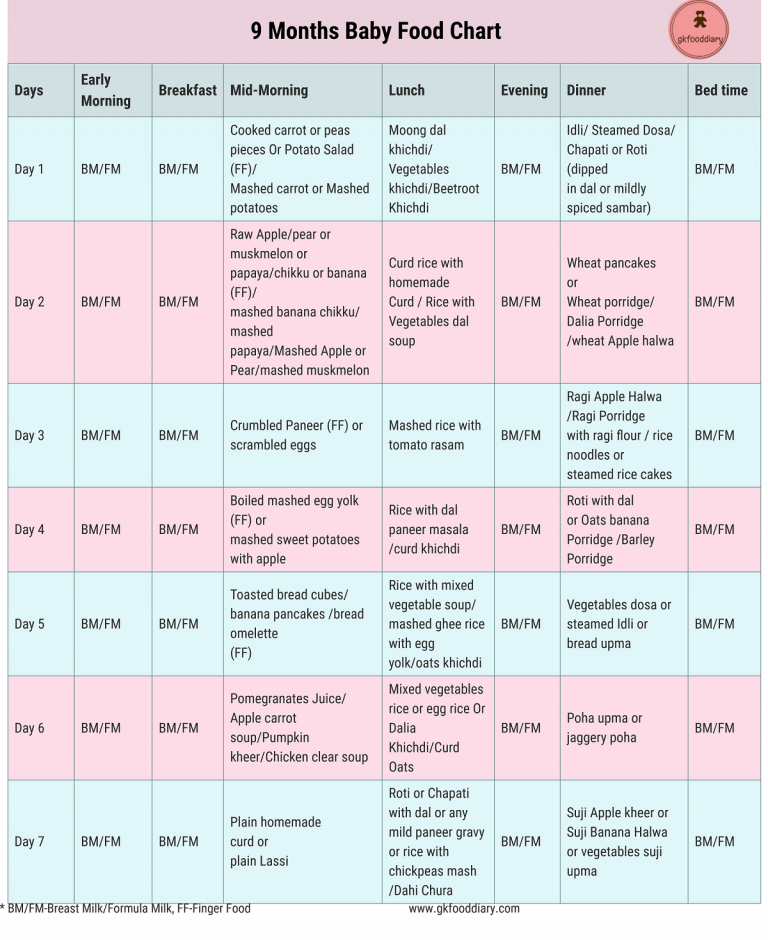 Should an adverse reaction occur during the morning/early afternoon, it will cause the least amount of disruption in baby’s fragile routine.
Should an adverse reaction occur during the morning/early afternoon, it will cause the least amount of disruption in baby’s fragile routine.
How to Spot a Potential Allergic Reaction to Food
Here are several things you might note that may indicate baby has a potential allergic reaction or intolerance to a food.
- Sudden loose, diarrhea stools and/or vomiting
- Sudden rashes on the skin and bottom
- Runny Nose
- Hives
- Irritability and/or gassiness after a new food/meal
- Breathing or other respiratory troubles after a new food/meal
- Swelling of the Face, Lips and/or Tongue
- Closure or tightening of the throat
Remember, an intolerance to a food is not the same as an allergy to a food and its symptoms typically involve trouble within the intestines.
Changes to Introducing Solid Foods – Allergenic Foods & Food Allergies
As you may have realized after reading through the site, charts and food recommendations are conservative in nature. This conservativism is particularly apparent in the recommendations for for introducing possible allergenic foods.
This conservativism is particularly apparent in the recommendations for for introducing possible allergenic foods.
As more and more studies come to light, there is a move to introduce allergenic foods to babies prior to 12 months (or older). The studies published from 2007 and on seem to show that introducing allergenic foods between 4-6 months of age may actually be better sooner rather than later and may provide protection against atopic disease (eczema or asthma for example). For example, introducing your 6 or 7 month old to whole eggs as opposed to just the yolks is given a green light. Please keep in mind that if you have a family history of food allergies, you might want to delay those allergenic foods. Of course, you should discuss this with your baby’s pediatrician!
In a 2008 update and affirmation of an AAP Policy Statement, the AAP notes the folllowing:
“Although solid foods should not be introduced before 4 to 6 months of age, there is no current convincing evidence that delaying their introduction beyond this period has a significant protective effect on the development of atopic disease regardless of whether infants are fed cow milk protein formula or human milk.
This includes delaying the introduction of foods that are considered to be highly allergic, such as fish, eggs, and foods containing peanut protein.” Click to view report
Resources and Studies relating to introducing allergenic foods earlier:
- German Study “This study found no evidence supporting a delayed introduction of solids beyond 4 or 6 months for the prevention of asthma, allergic rhinitis, and food or inhalant sensitization at the age of 6 years.”
- Dairy Introduction past 9 months This study notes that “More delay in introduction of cow milk products was associated with a higher risk for eczema.”
- ESPGHAN study “Exclusive or full breast-feeding for about 6 months is a desirable goal. Complementary feeding (ie, solid foods and liquids other than breast milk or infant formula and follow-on formula should not be introduced before 17 weeks and not later than 26 weeks. There is no convincing scientific evidence that avoidance or delayed introduction of potentially allergenic foods, such as fish and eggs, reduces allergies, either in infants considered at increased risk for the development of allergy or in those not considered to be at increased risk.
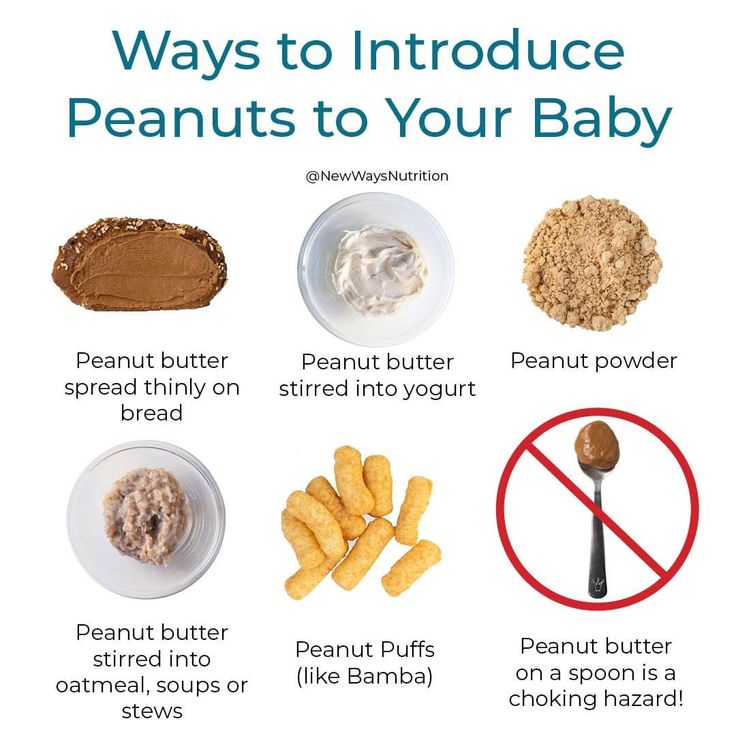
- Finnish Study – Late Introduction of Solids “Late introduction of solid foods was associated with increased risk of allergic sensitization to food and inhalant allergens. Eggs, oats, and wheat were most strongly related to food sensitization, whereas potatoes and fish were most strongly related to inhalant sensitization.
- Australian Study (2010) found infants given egg after 12 months of age are up to five times more likely to develop allergies compared to those who are introduced to eggs at four to six months, depending on how the egg is cooked.
Does my Baby have a Food Allergy or a Food Intolerance? Why is a Food Allergy Different from a Food Intolerance or a Food Reaction?
The process of any allergic reaction occurs when the body mistakes something like a food or pollen as a harmful and dangerous invader. The body reacts by releasing antibodies called immunoglobulin E(IgE). The IgE in turn prompts the body to release chemicals known as histamines.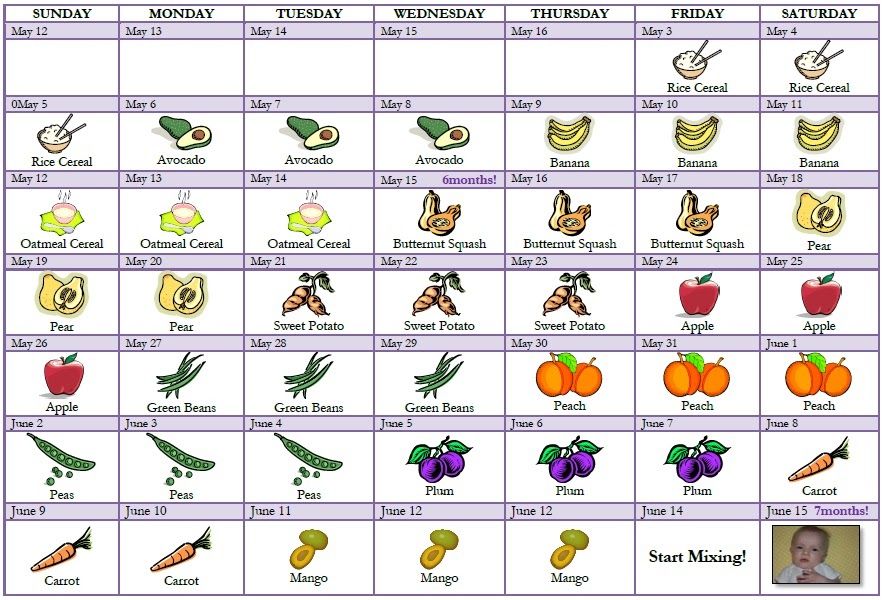
When the histamines are released, the body reacts by producing symptoms such as runny nose, itchy eyes, a skin rash and in severe cases, anaphylaxis. In a food allergy, the body’s immune system is involved.
What is a Food Reaction or Intolerance?
A food reaction or intolerance does not involve the immune system and it is often the case that a food that caused a reaction is easily tolerated at another time. A good example of this is citrus fruits.
Citrus fruits may cause a reaction or an intolerance in infants due to the high acidity of the fruit. The infant does not react with an immune response rather the infant reacts with either a gastrointestinal response or a dermatological response. Often times infants who are fed oranges prior to the age of 1 year old will break out in rashes around the mouth or bottom and possibly have tummy cramps.
Another example of a food intolerance is a lactose intolerance. People who are lactose intolerant lack a specific enzyme that helps to digest the sugar (lactose) in dairy products. Infants are often able to digest the lactose in dairy products like yogurt and cheese as the culturing of these products has broken down the lactose. In contrast with primary lactose intolerance, cow’s milk protein allergy affects young infants and usually resolves during the first year. Learn About Updated Lactose Intolerance Statements from the AAP.
Infants are often able to digest the lactose in dairy products like yogurt and cheese as the culturing of these products has broken down the lactose. In contrast with primary lactose intolerance, cow’s milk protein allergy affects young infants and usually resolves during the first year. Learn About Updated Lactose Intolerance Statements from the AAP.
Top 8 Allergenic Foods that account for
90% of all Food Allergies: (http://www.foodallergy.org/allergens.html)
- Milk
- Egg
- Peanut
- Tree nut (walnut, cashew, etc.)
- Fish
- Shellfish
- Soy
- Wheat (visit our Wheat page)
Children may “outgrow” food allergies to milk, eggs, soybean products and wheat.
Please note that a Wheat Allergy is different from Gluten Intolerance. Gluten Intolerance (Celiac’s Disease) is never outgrown and must be managed.
Children (and Adults) rarely outgrow allergies to peanuts, tree nuts, fish and shellfish.
Why is Honey on the “Least Allergenic” List and the List of Forbidden Foods?
On 13 January 2007 Charlene wrote to ask about the foods listed on our Allergy page. “I am wondering why you have honey on the list of least allergic foods? Honey can KILL babies”
If you are like I am, I sometimes skip over wordy paragraphs and head straight to the buller points and lists. Honey is included on the list because it is NOT an allergenic food however many parents come looking for honey on the allergy page and the “forbidden foods” page..
Please note that some of the foods that appear on the list of “Least Allergenic” should not be introduced until a certain age. While these foods may not be allergy causing, there may be other issues that make that food item inappropriate to give to an infant prior to a specific age. An example of this is honey; honey is not a known allergen however it may contain spores that are botulism inducing. Honey should not be given to an infant prior to one year of age.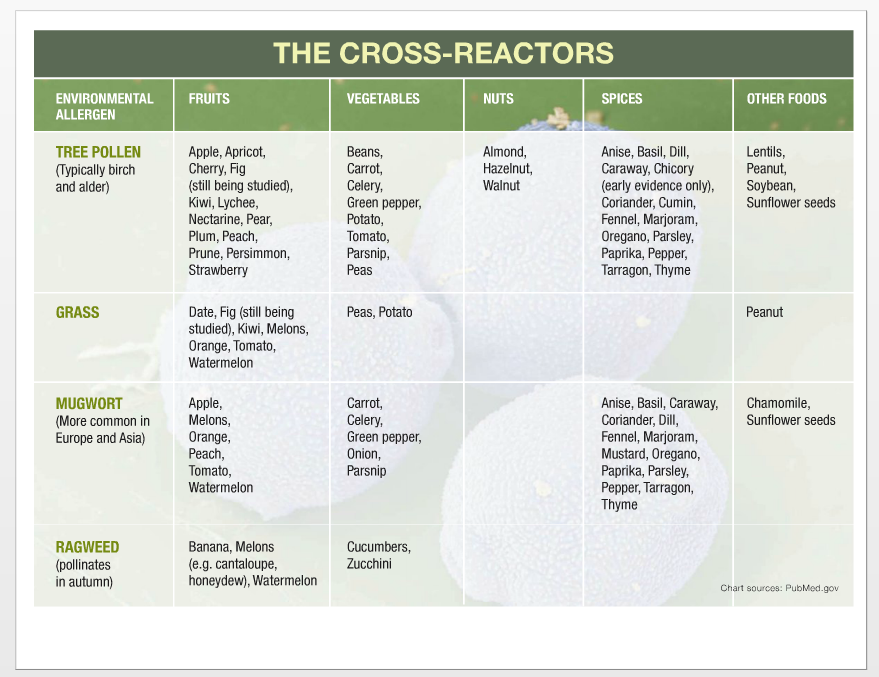 To learn more about honey, visit our Honey and Botulism Tips section.
To learn more about honey, visit our Honey and Botulism Tips section.
On this Allergy page foods are listed by their common “highest” and “lowest” allergen risk. There is also a nice table at the bottom of the page that was developed by Janice M. Joneja, Ph.D., RD.
All lists vary by the numbers of food items as well as the scale of the allergy risk. The chart below is a list of typical food allergens, broken down by the generic “high” and “low”. These food allergens are not broken down with any specificity regarding high-higher-highest allergens for example.
| MOST LIKELY TO INDUCE AN ALLERGIC REACTION | LEAST LIKELY TO INDUCE AN ALLERGIC REACTION |
|---|---|
| berries (not blueberries or cranberries.) | apples |
| chocolate | apricots |
| cinnamon (may cause rashes) | avocados |
| citrus fruits (acidic) | barley |
| coconut | beets |
| corn | broccoli |
| dairy products | carrots |
| egg whites | cauliflower |
| mustard | chicken |
| nuts | cranberries |
| peas | dates |
| peanut butter | grapes |
| pork | honey |
| shellfish | lamb |
| soy | lettuce |
| strawberries | mangoes |
| wheat | oats |
| yeast | papayas |
| peaches | |
| Looking to avoid allergenic foods in other foods? See the end of this page to learn about how eggs are found as “albumin” and much more! | pears |
| poi | |
| raisins | |
| rice | |
| rye | |
| safflower oil | |
| salmon | |
| squash | |
| sunflower oil | |
| sweet potatoes | |
| turkey | |
| veal |
You will see that on the “high” list, peas share the space with peanuts yet peas do not pose as great a concern as peanuts. This below is more of a “generic” list in that foods are in the same categories yet, they are not distinguished by allergenic levels.
This below is more of a “generic” list in that foods are in the same categories yet, they are not distinguished by allergenic levels.
The nice table that is at the bottom of our allergy page was developed by Janice M. Joneja, Ph.D., RD. In speaking to the different levels of allergenicity in foods, she says, “Nevertheless, we can make some generalizations about the degree of allergic potential (usually referred to as the allergenicity) of foods. I have developed an allergen scale (often referred to as the Joneja Food Allergen Scale), that has proved to be useful as a sort of comparative measure of the allergenicity of foods, based on the frequency of reactions in people eating a typical Western Diet.” You may visit her site here http://www.allergynutrition.com to learn more about her and her publications. Dr. Joneja compiled her more in depth and specific scale from research and experience in food allergies. The foods on the scale are listed from the highest to the lowest allergenic and are broken down into specific categories of allergenicity.
Always keep in mind that your doctor or consulting allergist should be able to tell you the appropriateness of foods for your baby.
back to top
The Joneja Food Allergen Scale
This table is based on the typical North American diet and compiled from a wide variety of sources. Foods are listed from the highest to the lowest allergenicity. People vary in their reactivity to foods and show a different pattern of reactivity depending on their individual characteristics. Persons following ethnic diets tend to show a different order of allergenicity. Allergenicity depends on a variety of factors including frequency of exposure to the food. Visit Dr. Jonja’s site to learn more.
| GRAINS &FLOURS | VEGGIES | FRUITS | NUTS &SEEDS | MEATS ETC. | DAIRY |
|---|---|---|---|---|---|
| Wheat Triticale Semolina Bulgur Spelt Kamut | Tomato Spinach Celery (raw) | Strawberry Raspberry Orange Fig Mango Watermelon | Peanut Nuts: Hazelnut (filbert) | Egg white Egg yolk | Ice cream Cow’s milk: Homogenized Raw milk 1%, 2%, Skim |
| Corn | Carrot (raw)Green pea Lima bean Broad bean(fava bean) Cabbage (heart) | Apple (raw) Apricot (raw) Peach (raw) Date Cantaloupe | Walnut Pecan Brazil nut Almond Sesame seed | Shellfish: Crab Lobster Prawn Shrimp Molluscs: Clam Oyster Scallop | Cheese fermented: Cheddar Camembert Blue Swiss Edam Mozzarella Goat cheese |
| Oats | Pineapple Raisin Apple (cooked) | Cocoa bean Chocolate Coconut Flax seed | |||
| Rye Barley | Cauliflower Brussels sprouts Green bean | Kiwi Cherry Plum/prune Apricot (cooked) | Cashew Pistachio Macadamia | Fin fish Cod Sole Other white fish Tuna Salmon | Cottage cheese Cream cheese |
| Brown rice White rice Wild rice | Avocado Cabbage (outer leaves) | Loganberry Boysenberry | Legumes: Soy Dried peas Lentils Dried beans Navy Pinto Garbanzo Carob Sunflower seed | Cream Sour cream | |
| Quinoa | Onion Green onion Garlic | Plantain Banana Grape | Processed meats Pepperoni Salami Bologna Wieners Ham Bacon | Canned milk (evaporated) | |
| Buckwheat (kasha) | Celery (cooked) Green/red peppers | Grapefruit Lemon Lime | Goat milk Sheep milk | ||
| Amaranth | Potato Cucumber Lettuce | Currants (red/ black) | Pumpkin seed | Pork | Processed cheese |
| Tapioca Cassava | Asparagus Broccoli Beets | Peach (cooked/ canned) | Bean sprouts | Chicken Beef Veal | Soft cheese (Philadelphia) |
| Sag Arrowroot Millet | Squashes (all types) | Cranberry Blackberry Blueberry | Poppy seed | Wild meats Deer Elk Moose Bear Buffalo | Yogurt Buttermilk |
| Carrot (cooked) Parsnip | Pear | Butter | |||
| Turnip Sweet potato Yam | Rhubarb | Turkey Lamb Rabbit | Clarified butter |
Please be sure to read all food labels thoroughly! While products may be allergen free because specific allergenic ingredients are not listed as being contained within a product, they may be processed in a facility that also processes allergenic foods; cross contamination may be an issue.
EGG FREE DIET
Avoid foods that contain any of the following:
- albumin
- egg (white, yolk, dried, powdered, solids)
- egg substitutes
- eggnog
- globulin
- lysozyme (used in Europe)
- mayonnaise
- meringue
- ovalbumin
- ovomucin
- ovomucoid
- ovovitellin
- Simpleese
Note: A shiny glaze or yellow glaze on baked goods usually indicates the presence of egg.
SOY FREE DIET
Avoid foods that contain any of the following ingredients:
- miso
- shoyu sauce
- soy (flour, grits, nuts, milk, tofu soy bean sprouts)
- soybean (granules, curd)
- soy protein (concentrate, isolate)
- soy sauce
- textured vegetable protein (TVP)
- tofu
Ingredients that MAY indicate the presence of soy protein:
- flavorings
- hydrolyzed plant protein
- hydrolyzed soy proteins
- hydrolyzed vegetable protein
- natural flavoring
- vegetable broth
- vegetable gum
- vegetable starch
Studies show that most soy allergic individuals may safely eat products containing soy lecithin and soy oil.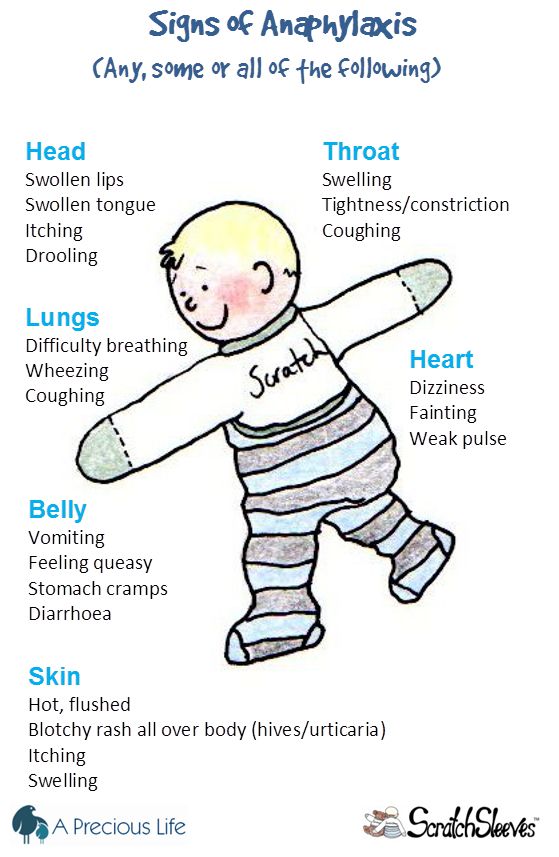
WHEAT/GLUTEN FREE DIET
Avoid foods that contain any of the following:
Please note that this list is a compilation of the most common but not ALL the possible wheat/gluten foods and ingredients.
- bread crumbs
- bran
- cereal extract
- acker meal
- enriched flour
- farina
- semolina durham
- gluten
- high gluten flour
- high protein flour
- vital gluten
- wheat bran
- wheat gluten
- wheat starch
- whole wheat flour
- oats
- barley
Ingredients that MAY indicate the presence of wheat protein:
- gelatinized starch
- hydrolyzed vegetable protein
- modified food starch
- modified starch
- natural flavoring
- soy sauce
- starch
- vegetable gum
- vegetable starch
MILK FREE DIET
Food made completely without diary products will say “Parve” on the package.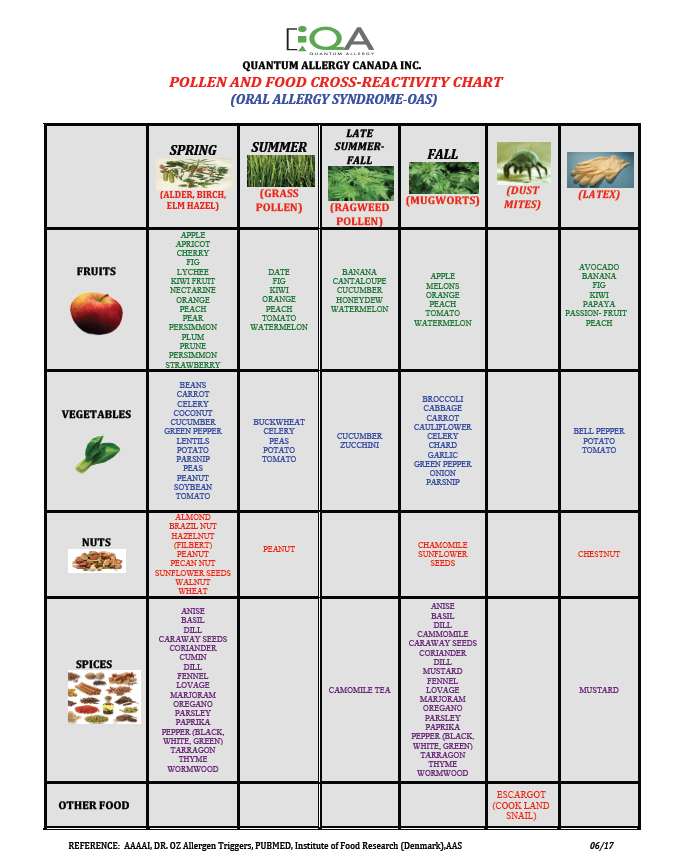
You will usually find these foods in the kosher section amongst your other favorite sections in your local grocers. A “D” or “DE” on a product label next to a “K” or circled “U” may indicate the presence of milk protein; this is either as a direct ingredient (D) or because the product was processed on equipment that also processes dairy ingredients (DE).
Avoid foods that contain any of the following:
- artificial butter flavor
- butter, butter fat, buttermilk
- casein
- caseinates (ammonia, calcium, magnesium, potassium, sodium)
- cheese
- cottage cheese
- curds
- custard
- half and half
- hydrolysates (casein, milk protein, protein, whey, whey protein)
- lactalbumin, lactalbumin phosphate
- lactoglobulin
- lactose
- milk (derivative, protein, solids, malted, condensed, evaporated, dry, whole, low fat, non fat, skim)
- nougat
- pudding
- rennet casein
- sour cream, sour cream solids
- sour milk solids
- whey (delactosed, demineralized, protein concentrate)
- yogurt
While parve foods are dairy free, meaning no dairy ingredients were used in the making of the product, there is a possibility of cross contamination and many parve food labels are now reflecting this.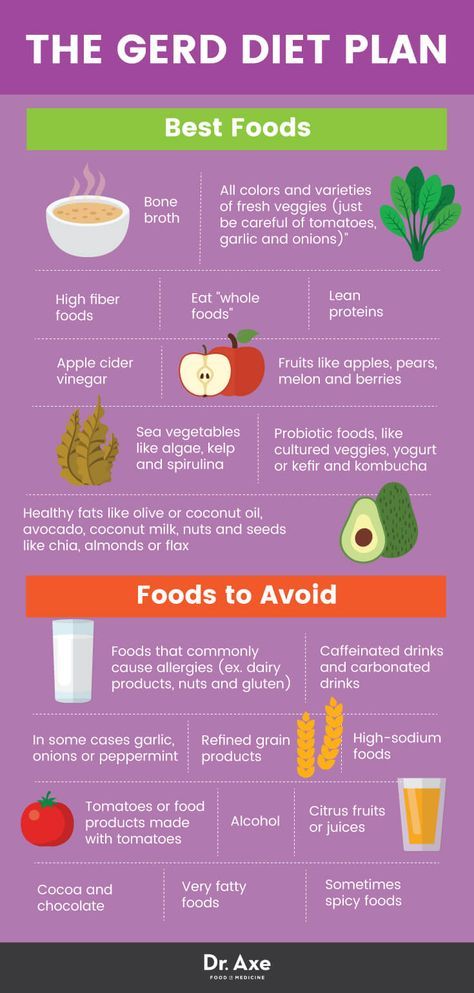 “Pareve is a designation indicating that a food contains neither milk nor meat products, by-products, or derivatives. It is critical to understand that the designation of pareve is given solely on the basis of halacha (Jewish Law). When a product is marked pareve (excepting the rare case of mislabeling – a subject for another discussion) by a reputable Kashrus agency, the religious consumer knows that the product meets all halachic criteria and may be used with any meal. But relying on this certification as a 100% certainty for medical reasons is a decision that requires careful consideration on part of the consumer, along with an understanding of the realities of food processing.” Chicago Rabbinical Council
“Pareve is a designation indicating that a food contains neither milk nor meat products, by-products, or derivatives. It is critical to understand that the designation of pareve is given solely on the basis of halacha (Jewish Law). When a product is marked pareve (excepting the rare case of mislabeling – a subject for another discussion) by a reputable Kashrus agency, the religious consumer knows that the product meets all halachic criteria and may be used with any meal. But relying on this certification as a 100% certainty for medical reasons is a decision that requires careful consideration on part of the consumer, along with an understanding of the realities of food processing.” Chicago Rabbinical Council
According to the OU (Orthodox Union) Kosher, the world’s largest and most widely recognized kosher certification agency,
“The trace nuts and dairy disclaimer that is now printed on many products is there to warn consumers that although there are no nuts or dairy in the ingredients of the product itself, there is a possibility of parts per millions floating in the air and ‘contaminating’ the product. The ‘contamination’ would only affect consumers with extremely severe allergies who can detect even the most trace amounts of the substance that they are reacting to. A product that is labeled OU (and thereby certified kosher parve) is halachically (by Jewish Law) parve. The parts per million does not affect the status of a product, because parts per million are negligible and have no halachic significance.
The ‘contamination’ would only affect consumers with extremely severe allergies who can detect even the most trace amounts of the substance that they are reacting to. A product that is labeled OU (and thereby certified kosher parve) is halachically (by Jewish Law) parve. The parts per million does not affect the status of a product, because parts per million are negligible and have no halachic significance.
As an example, a factory might produce dairy and parve products on two separate production lines. Nonetheless, air-born particles of milk or whey powder might float onto the parve production line. Though a person might suffer an allergic reaction, the product is still halachically parve.
Companies have been especially cautious in the past few years to publicize this information as the public’s knowledge of allergens has grown. http://oukosher.org/index.php/learn/article/trace_disclaimer/
When looking for dairy-free and dairy cross-contaminant free pareve products, look for the OU pareve designation on a package.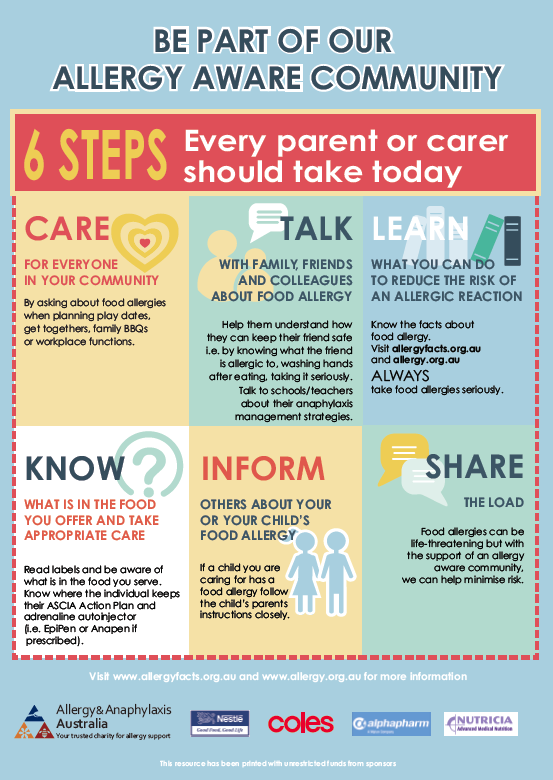 According to the OU, “The USDA allows food manufacturers to put a “non-dairy” designation on an item that may contain up to two percent in dairy ingredients. For vegetarians and those who are lactose intolerant, even this small percentage is unacceptable. Only a truly pareve classification can guarantee that absolutely no dairy ingredients, no dairy residue and no contact with dairy equipment were used to prepare the food.” http://www.oukosher.org/index.php/common/article/the_power_of_pareve/
According to the OU, “The USDA allows food manufacturers to put a “non-dairy” designation on an item that may contain up to two percent in dairy ingredients. For vegetarians and those who are lactose intolerant, even this small percentage is unacceptable. Only a truly pareve classification can guarantee that absolutely no dairy ingredients, no dairy residue and no contact with dairy equipment were used to prepare the food.” http://www.oukosher.org/index.php/common/article/the_power_of_pareve/
As always, read labels for warnings of cross contamination with possible allergens of any type!
Ingredients that MAY indicate the presence of milk protein:
- brown sugar flavoring
- caramel flavoring
- chocolate
- high protein flour
- margarine
- natural flavoring
- Simplesse
TREE NUT FREE DIET
Avoid foods that contain nuts or any of these ingredients:
- almonds
- brazil nuts
- cashews
- chestnuts
- filberts / hazelnuts
- gianduja (a creamy mixture of chocolate and chopped toasted nuts found in premium or imported chocolates)
- hickory nuts
- macadamia nuts
- marzipan / almond paste
- nougat
- Nu-Nuts artificial nuts
- nut butters, i.
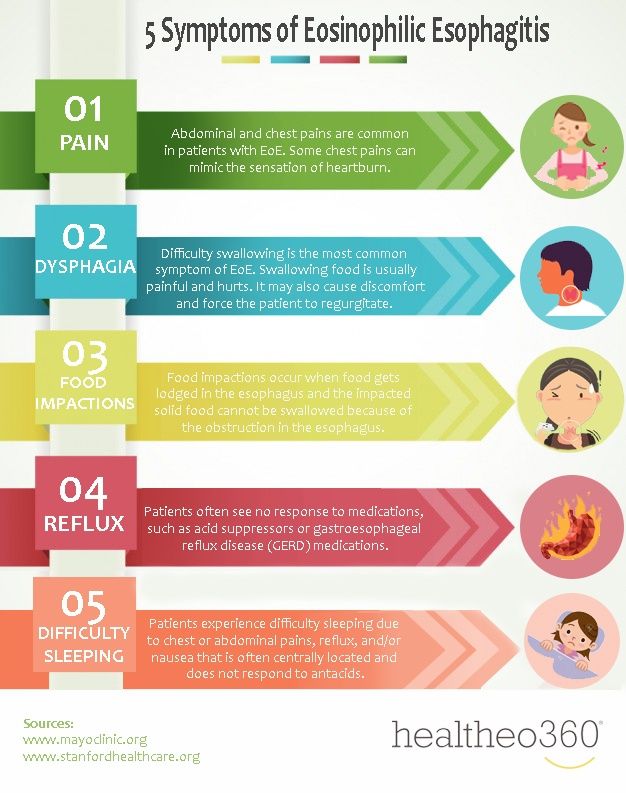 e. cashew butter
e. cashew butter - nut oil
- nut paste, i.e. almond paste
- pecans
- pine nuts (pinyon nuts)
- pistachios
- walnuts
- Nu-Nuts are artificial nuts that really are peanuts that have been deflavored and reflavored with a nut like pecan or walnut.
- Filberts are hazelnuts.
Avoid natural extracts such as pure almond extracts, and natural wintergreen extract (for filbert/hazelnut sensitive).
Use imitation or artificial flavored extracts.
PEANUT FREE DIET
Avoid foods that contain any of these ingredients:
- cold pressed peanut oil
- ground nuts mixed nut
- Nu-Nuts artificial nuts
- peanut
- peanut butter
- peanut flour foods and ingredients that MAY indicate presence of peanut protein:
- African, Chinese, Thai and other ethnic dishes
- baked goods (pastries, cookies, etc..)
- candy
- chili
- chocolate (candy, candy bars)
- egg rolls
- hydrolyzed plant protein
- hydrolyzed vegetable protein
- marzipan
- nougat
Peanuts are very allergenic and can cause a life threatening anaphylactic (general body) reaction.
ORAL ALLERGY SYNDROME |
|---|
| The food on this page may be one involving OAS. OAS occurs when a person sensitive/allergic to pollen develops a reaction to fruits/veggies that have a similar type of pollen. Itching & swelling of the lips, the mouth and/or throat are typical symptoms. These symptoms normally appear within minutes of eating the offending food and may be worse during the spring and fall pollen seasons. Rarely is an OAS life threatening. Click below to learn more. |
| Birch Pollen Allergies |
| Birch pollen allergies are associated with apple, carrot, cherry, pear, peach, plum, fennel, walnut, potato, spinach, buckwheat, peanut, honey, celery, and kiwifruit. |
| Cedar Allergies |
| Japanese cedar allergies are associated with melon, apple, peach and kiwifruit. |
| Mugwort Allergies |
Mugwort allergies are associated with celery, carrot, spices, melon, watermelon, apple, hazelnut, and chestnut. |
| Grass Pollen |
| Grass pollen allergies are associated with melon, tomato, watermelon, orange, rice and cherry. |
| Ragweed Pollen |
| Ragweed allergies are associated with melon, chamomile, honey, banana, and sunflower seeds. |
| Latex |
| Latex allergies may be cross-reactive to banana, avocado, kiwi and papaya. |
Remember, always consult with your pediatrician regarding introducing solid foods to your baby and specifically discuss any foods that may pose allergy risks for your baby.
This site complies with the HONcode standard for trustworthy health information:
verify here.
SHARE ON FACEBOOK SHARE ON PINTEREST
Introducing Major Food Allergens | Happy Baby Organics
JanelMS, RD, LDN, CBS
Read time: 5 minutes
Learn the major food allergens
Understand the latest research about introducing allergens early
Recognize the symptoms of a food allergy
Keeping up with the latest food allergy recommendations can seem daunting, especially since new research seems to come out all the time. What causes food allergies and why they’re on the rise remains unclear, but the fact that they are rising cannot be disputed.
What causes food allergies and why they’re on the rise remains unclear, but the fact that they are rising cannot be disputed.
Knowing how to introduce food allergens to your baby at the right time and what signs to look for if your little one is allergic can help you feel confident in feeding your little one.
What causes a food allergy?Roughly 8% of American children have at least one food allergy.1,2 An allergic reaction to food happens when the body's immune system overreacts to a protein in food. Instead of seeing it as harmless, the food is labeled as dangerous, and the body initiates a protective response.3,
Top eight food allergensAny food has the potential to cause an allergic response, and so far over 160 foods have been identified as potential allergens.4 However, only eight foods account for about 90% of all reactions. 4
4
Top 8 food allergens:
Milk
Eggs
Peanuts
Tree Nuts (walnuts, pecans, almonds, cashews, pistachios)
Soy
Wheat
Fish
Crustacean Shellfish (shrimp, crab and lobster)
Starting in January 2023, sesame seeds will be added to the list as the ninth major food allergen.
Sesame allergy affects over 1 million Americans, prompting the passage of the FASTER (Food Allergy Safety, Treatment, Education, and Research) Act by Congress in April 2021. This will make sesame the ninth major food allergen.5,6 At that time, all foods with sesame seeds will need to be labeled, just like the current eight major allergens.4
When to introduce food allergens to your infantThe latest research has shown that there is no benefit in delaying the introduction of allergy-causing foods.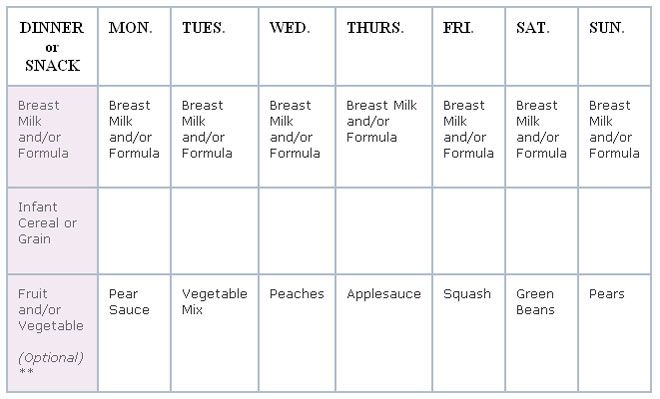 7 Because of this, the American Academy of Pediatrics (AAP) recommends introducing foods such as eggs, dairy, soy, peanuts, or fish when you introduce solids, no later than 6 months.8
7 Because of this, the American Academy of Pediatrics (AAP) recommends introducing foods such as eggs, dairy, soy, peanuts, or fish when you introduce solids, no later than 6 months.8
However, if you suspect your baby has an allergic reaction to a food or if you have a history of severe eczema or food allergies, talk to your doctor on how best to introduce allergy-causing foods.
Read more:
Starting Solids: Signs of Readiness
Introducing Solids: First Foods and Textures
What are the symptoms of a food allergy?Once you introduce a new potential food allergen to your baby, how do you know if your little one has an allergy? Symptoms of an allergic reaction may involve the skin, the digestive system, the cardiovascular system and/or the respiratory tract.9, These symptoms can vary from person to person, and from incident to incident.
It’s important to know that while a mild reaction can occur on one occasion, a severe reaction to the same food may occur when the food is introduced later. 3,
3,
Symptoms of a food allergy may include:
Hives (red spots that look like bug bites)
Itchy skin rashes (eczema)
Swelling to the lips and face
Sneezing, wheezing, or throat tightness
Nausea, vomiting, or diarrhea
Pale skin
Light-headedness
Loss of consciousness
Anaphylaxis9,10
Anaphylaxis requires immediate medical treatment. Anaphylaxis is a severe and potentially life-threatening allergic reaction that can occur within seconds or up to 2 hours after a child is exposed to an allergen.3,10 It can, among other things, cause a sudden drop in blood pressure and difficulty breathing.3, If you notice any of these severe symptoms, call 911 immediately.
If your child has known allergies, make sure you speak to your physician or allergist to get an emergency plan in place so that you are always prepared.
Read more: Signs and symptoms of food sensitivities and allergies in children
Know if your infant is high risk before introducing food allergensDiscuss your plan to introduce solid foods and allergens with baby’s physician or allergist. Your little one may be at higher risk for food allergies if someone in baby’s family has a food allergy or has a family history of other allergic diseases, such as eczema, asthma, hay fever, or atopic dermatitis.12 Your infant may also be at higher risk if they have known allergies or severe eczema.11,13
Introduce major allergens alongside safe, already well-tolerated first foodsUnless otherwise instructed by your physician, give your baby one major allergen at a time at a rate no faster than one new food every 3 to 5 days.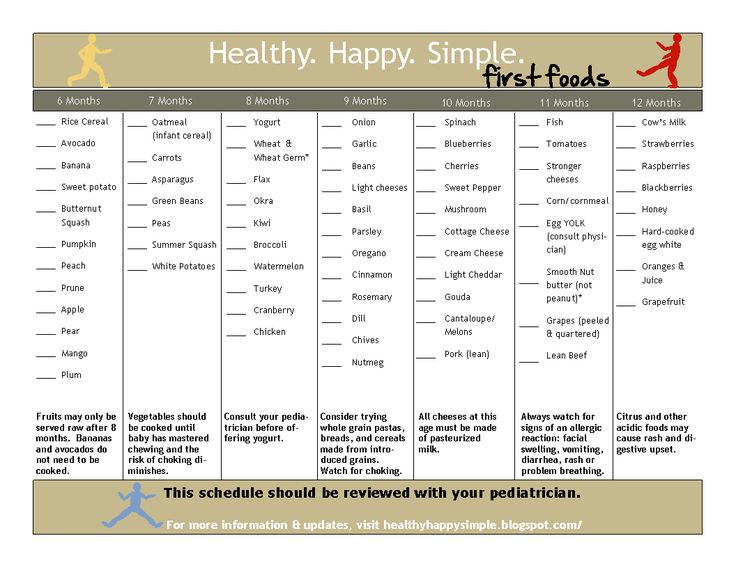 12 Make sure no other new foods are introduced at the same time so you can accurately track any symptoms that may be related to the allergen introduced.
12 Make sure no other new foods are introduced at the same time so you can accurately track any symptoms that may be related to the allergen introduced.
Note that when introducing food allergens, be sure they are in the appropriate texture for your little one’s development. Avoid choking hazards, such as whole peanuts.
You can trial dairy product such as cheese and yogurt before age one, but whole cow’s milk should be avoided until after one year of age. While the reason behind this is unrelated to allergies, it is worth noting because your baby cannot digest whole cow’s milk easily.14
Learn about:
Preventing Choking in Infants and Toddlers
Does my Baby or Toddler have a Milk Allergy or Lactose Intolerance?
Keep potential food allergens in your infant’s diet consistentlyOnce you’ve introduced a potential food allergen and your little one does well, make sure to offer that food regularly.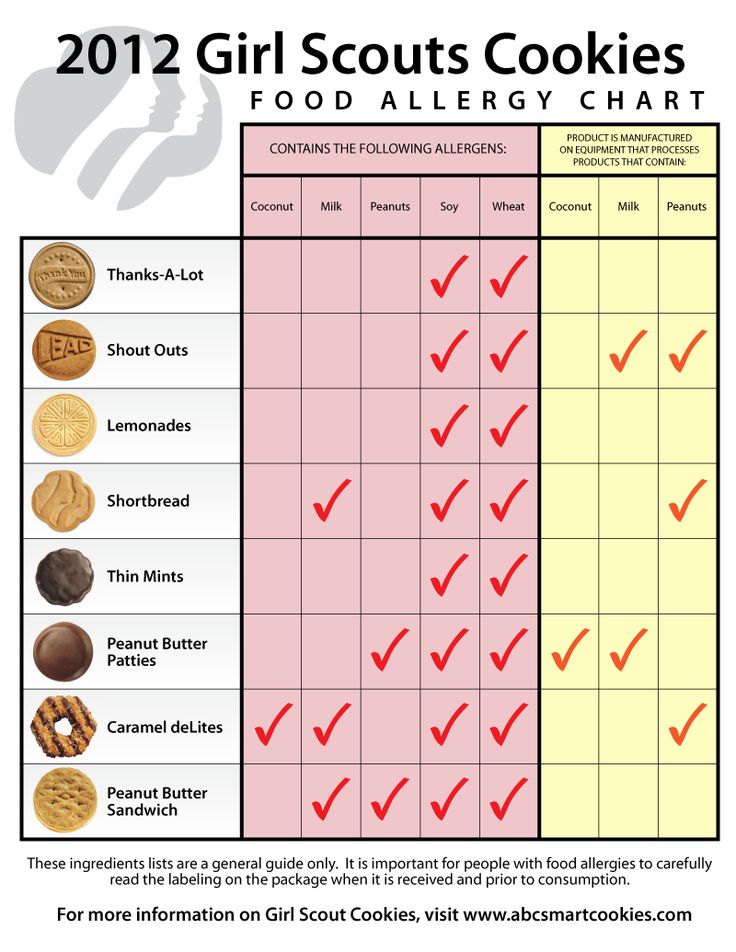 This will help your infant maintain their tolerance to it.13
This will help your infant maintain their tolerance to it.13
Introduce these allergens in a texture your little one can handle. The below give ideas for purees as well as soft finger foods, depending on the stage your little one is at.
Dairy (Cow’s milk): Whole milk yogurt or shredded cheese
Soy: Mashed tofu or small cubes of tofu
Eggs: Scrambled eggs or small pieces of hard-boiled eggs
Peanuts, tree nuts, sesame (best given in butter or powder format): Mix a small amount of nut butter or nut powder into a fruit or vegetable puree or put a very thin layer of a nut butter on strips of toast. The butter or powder may also be added to a smoothie.
Fish: Soft, moist, well-cooked fish; mashed or cut into pieces
Wheat: Wheat infant cereal such as cream of wheat, wheat-containing teething biscuits, or strips of whole wheat toast with a smidge of butter
Current research indicates that avoiding foods during pregnancy or breastfeeding is not effective in helping to reduce the risk of our babies developing allergies. 15 And in fact, there is some evidence that early introduction of allergens during pregnancy and breastfeeding, such as mom including fish and peanuts in her diet, may help to lower the risk of your little one developing allergies to these foods.16
15 And in fact, there is some evidence that early introduction of allergens during pregnancy and breastfeeding, such as mom including fish and peanuts in her diet, may help to lower the risk of your little one developing allergies to these foods.16
Of course, it is important to avoid any foods that you are allergic to! Additionally, if your breastfed baby has an allergy those foods should be avoided as well.
With this in mind, be sure to eat a wide variety of foods while you are pregnant and breastfeeding. Not only may it help reduce the risk of allergies, but you need the full range of nutrients to grow a healthy baby.
Read more:
Which Nutrients Do I Need During Pregnancy?
What to Eat while Breastfeeding
Let's Chat!We know parenting often means sleepless nights, stressful days, and countless questions and confusion, and we want to support you in your feeding journey and beyond.
Our Happy Baby Experts are a team of lactation consultants and registered dietitian nutritionists certified in infant and maternal nutrition – and they’re all moms, too! They’re here to offer personalized support on our free, one-on-one, live chat platform Monday - Friday 8am-6pm (ET), and Saturday - Sunday 8am-2pm (ET). No appointment needed, no email or sign-up required. Chat Now!
Read more about the experts that help write our content!
For more on this topic, check out the following articles:Guidance When Raising a Child with Food Allergies
Major allergens: What to Know When Pregnant and Breastfeeding
Sources
Allergy to baby food in a child: nutrition for infants with allergies
Published: 03/16/2017
Reading time: 4 min.
Number of reads: 33945
Author of the article: Ponomareva Yulia Vladimirovna
Pediatrician, Candidate of Medical Sciences, Allergist-Immunologist
Food allergy is one of the most common health problems in a baby in the first year of life. According to statistics, every third child of this age has manifestations of food intolerance. Many parents are concerned about the question of what this condition is connected with and whether it is possible to avoid the development of an allergy to baby food in a baby. nine0003
According to statistics, every third child of this age has manifestations of food intolerance. Many parents are concerned about the question of what this condition is connected with and whether it is possible to avoid the development of an allergy to baby food in a baby. nine0003
Content: Hide
- State of the art
- Food allergy
- Major allergens
- Prevention is easier than cure
- Transition period
- Where to start?
- Complementary cereals in the diet of allergy sufferers
- Benefits of industrial baby food
Current state of the problem
In developed countries, there is a steady increase in allergic diseases every year, not only among children, but also among adults. There is no definitive answer about the reason for the increase in the incidence rate, but the role of factors such as living in large metropolitan areas, the distance of a person from nature, and a decrease in infectious load at an early age is being discussed. The immune system of the child, not receiving infectious stimuli, begins to respond to factors that normally do not cause any reactions - food, pollen or pet hair. In most babies at an early age, allergy manifestations are associated with food intolerance. Typically onset is in children over 3 months of age, with peak incidence at 5–9months. Often the first symptoms are associated with the start of the introduction of complementary foods.
The immune system of the child, not receiving infectious stimuli, begins to respond to factors that normally do not cause any reactions - food, pollen or pet hair. In most babies at an early age, allergy manifestations are associated with food intolerance. Typically onset is in children over 3 months of age, with peak incidence at 5–9months. Often the first symptoms are associated with the start of the introduction of complementary foods.
Food allergies
Why do babies have so many food allergies? In addition to hereditary predisposition to allergic diseases, the immaturity of the digestive system, early cessation of breastfeeding, and disturbances in the intestinal microbiota play an important role. The introduction of foods with a high allergenic potential into the diet, as a rule, gives rise to the first manifestations of allergies. It is not difficult to diagnose this condition, typical manifestations are itchy skin rashes and disorders of the gastrointestinal tract.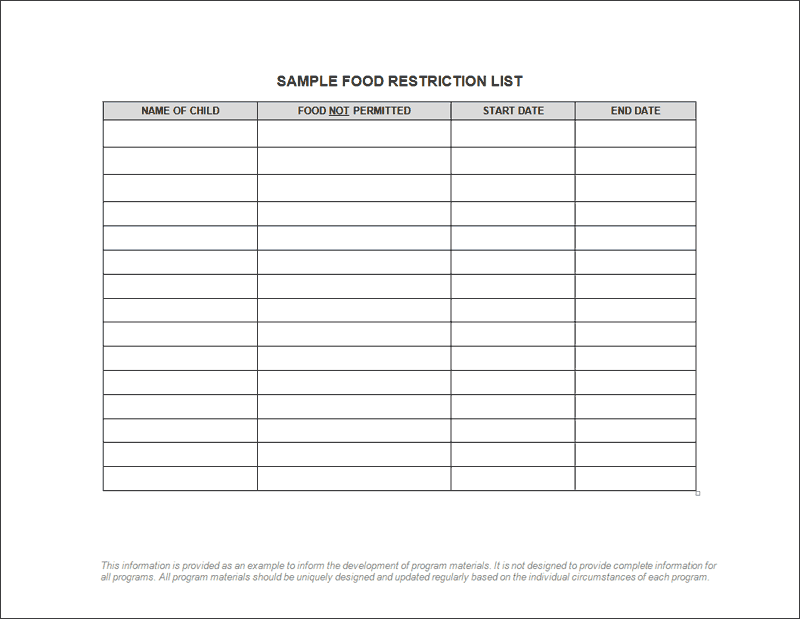 Often there is a causal relationship between rashes and the use of a particular product. Allergy symptoms cause anxiety to the baby, disrupt his sleep and quality of life. And the lack of adequate timely treatment increases the risk of further development of respiratory diseases such as allergic rhinitis and bronchial asthma. nine0003
Often there is a causal relationship between rashes and the use of a particular product. Allergy symptoms cause anxiety to the baby, disrupt his sleep and quality of life. And the lack of adequate timely treatment increases the risk of further development of respiratory diseases such as allergic rhinitis and bronchial asthma. nine0003
Major allergens
Almost any food can cause an allergic reaction, but in 90% of cases only a few allergens are responsible for this condition: cow's milk, chicken eggs, wheat, fish and seafood, soy, tree nuts (peanuts are the most common among them). ). Heat treatment does not lead to a decrease in allergenicity, therefore the most effective method of treatment is to completely eliminate the causative product from the baby's diet. Allergy to several products at once occurs quite rarely, but you need to be aware of the possibility of cross-reactions. So, a baby with an allergy to cow's milk protein has a high risk of reactions to the milk of other mammals and beef, with intolerance to a chicken egg, a reaction to chicken meat is likely, and intolerance to other gluten-containing cereals is possible with a reaction to wheat protein. Cow's milk protein is the most common cause of food allergies, so mothers should follow a strict dairy-free diet if their child develops an intolerance. If the baby is bottle-fed, special therapeutic mixtures are recommended in the diet, which are based on the most split milk protein. In addition to the exclusion of dairy products, the timing of the introduction of other strong food allergens - chicken eggs and fish, is being postponed, these products are used in the menu of children older than a year. nine0003
Cow's milk protein is the most common cause of food allergies, so mothers should follow a strict dairy-free diet if their child develops an intolerance. If the baby is bottle-fed, special therapeutic mixtures are recommended in the diet, which are based on the most split milk protein. In addition to the exclusion of dairy products, the timing of the introduction of other strong food allergens - chicken eggs and fish, is being postponed, these products are used in the menu of children older than a year. nine0003
Prevention is easier than cure
Is it possible to avoid developing allergies to baby food? Indeed, this disease is better to prevent than to cure. Of course, the presence of allergic diseases in the immediate family determines the risk of developing allergies in the child. Therefore, parents at the earliest stages should take care of the prevention of this condition. Modern experts do not recommend a special diet for mom during pregnancy. Her diet should be complete and varied as much as possible, in reasonable quantities she can eat various foods, including unconditional allergens.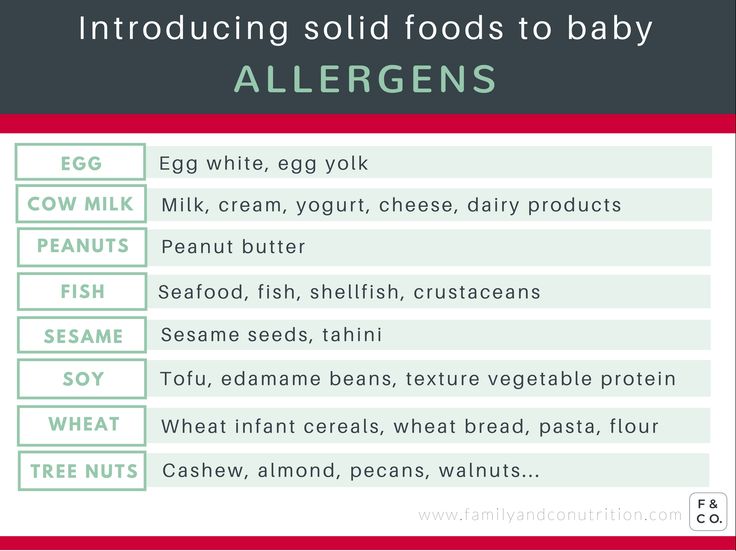 The baby, even in the womb, begins to get acquainted with the whole variety of food. Unnecessary use of antibiotics during pregnancy should be avoided and, when planning a mode of delivery, only cesarean delivery should be considered when absolutely necessary. These factors play an important role in disrupting the development of the gut microbiota, which in turn increases the risk of allergic reactions. Another key factor is early breastfeeding. If there is a need for artificial feeding or supplementary feeding to a baby at risk of developing allergies, nutrition should be organized on the basis of special preventive mixtures that a specialist can recommend. nine0003
The baby, even in the womb, begins to get acquainted with the whole variety of food. Unnecessary use of antibiotics during pregnancy should be avoided and, when planning a mode of delivery, only cesarean delivery should be considered when absolutely necessary. These factors play an important role in disrupting the development of the gut microbiota, which in turn increases the risk of allergic reactions. Another key factor is early breastfeeding. If there is a need for artificial feeding or supplementary feeding to a baby at risk of developing allergies, nutrition should be organized on the basis of special preventive mixtures that a specialist can recommend. nine0003
Transition period
The next most important step in the prevention of food allergies is the correct introduction of complementary foods. This is a crucial moment in the baby's life, since on the one hand it is necessary to introduce each product with caution, carefully monitoring possible reactions, and giving preference to low-allergenic products.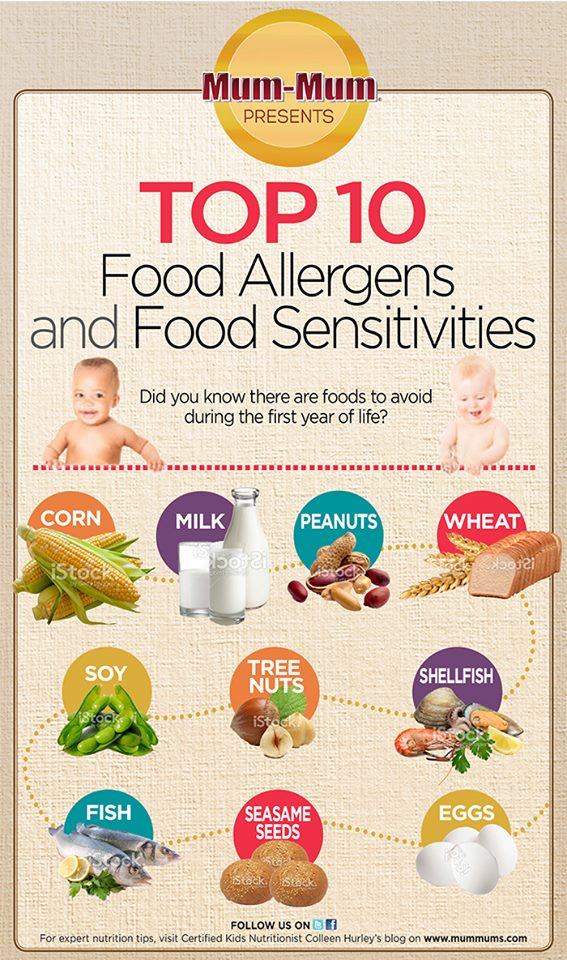 On the other hand, it is wrong to delay the expansion of the diet. It is important to introduce all major food groups in as much variety as possible between 5 and 8 months. This is the corridor for the formation of an adequate response of the immune system to food products, when it is ready to recognize and accept food, which allows a person to eat these products in subsequent years without the risk of allergic reactions. nine0003
On the other hand, it is wrong to delay the expansion of the diet. It is important to introduce all major food groups in as much variety as possible between 5 and 8 months. This is the corridor for the formation of an adequate response of the immune system to food products, when it is ready to recognize and accept food, which allows a person to eat these products in subsequent years without the risk of allergic reactions. nine0003
Where to start?
In infants at risk of developing food allergies, the general recommendations for starting food groups follow the standard approach. That is, complementary foods can be started with vegetables or cereals. Vegetable complementary foods would be preferable in a child with functional digestive disorders with a tendency to stool retention. Low-allergenic green and white vegetables such as squash, cauliflower, and broccoli are good choices. The first vegetable complementary foods should not contain salt, sugar and prepared without adding milk. In other cases, in children with food allergies or the risk of their occurrence, cereals are the best option for starting complementary foods. Why cereals? Under the conditions of compliance with a hypoallergenic diet by the mother and forced restrictions on the child's diet, cereals, as a source of essential nutrients, vitamins and minerals, significantly increase the nutritional, biological and energy value of the diet. nine0003
Low-allergenic green and white vegetables such as squash, cauliflower, and broccoli are good choices. The first vegetable complementary foods should not contain salt, sugar and prepared without adding milk. In other cases, in children with food allergies or the risk of their occurrence, cereals are the best option for starting complementary foods. Why cereals? Under the conditions of compliance with a hypoallergenic diet by the mother and forced restrictions on the child's diet, cereals, as a source of essential nutrients, vitamins and minerals, significantly increase the nutritional, biological and energy value of the diet. nine0003
Complementary cereals in the diet of allergy sufferers
Can a child with an allergy or a predisposition to develop it have any porridge? Of course, not any. Dairy-free and gluten-free products are introduced as the first cereal food. Whole cow's milk, due to the high risk of food intolerance, is excluded from the diet of this group of children at least until the end of the first year of life.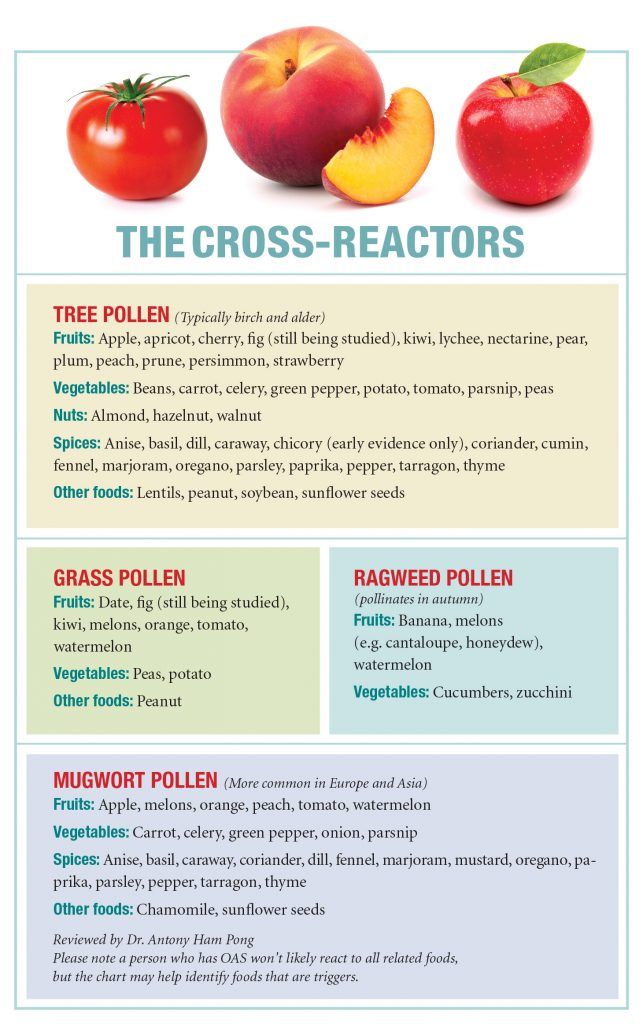 Accordingly, porridge is prepared on the basis of mother's milk, a specialized mixture or baby water without the addition of salt and sugar. Gluten-free cereals include buckwheat, rice and corn. How to cook porridge based on mother's milk in order to preserve all the valuable biological substances? Cooking is certainly detrimental to the protective antibodies, enzymes, hormones, and beneficial bacteria found in breast milk. Therefore, the best solution is to use commercially produced instant cereals for baby food. Mother's milk or a specialized formula can be heated in a water bath to 40 ° C, add the dry part in accordance with the manufacturer's recommendations and quickly get a ready-to-eat meal, preserving all the most valuable for the baby's health. nine0003
Accordingly, porridge is prepared on the basis of mother's milk, a specialized mixture or baby water without the addition of salt and sugar. Gluten-free cereals include buckwheat, rice and corn. How to cook porridge based on mother's milk in order to preserve all the valuable biological substances? Cooking is certainly detrimental to the protective antibodies, enzymes, hormones, and beneficial bacteria found in breast milk. Therefore, the best solution is to use commercially produced instant cereals for baby food. Mother's milk or a specialized formula can be heated in a water bath to 40 ° C, add the dry part in accordance with the manufacturer's recommendations and quickly get a ready-to-eat meal, preserving all the most valuable for the baby's health. nine0003
Benefits of industrial baby food
In addition to being quick and easy to prepare, modern industrial baby food meets high quality and environmental standards. The Bebi Premium product line "Porridges for the first feeding" is a good choice for babies with food allergies or a predisposition to them. It is preferable to start with a subgroup of low-allergenic cereals from this line. They fully comply with all the conditions for introducing cereal complementary foods to babies with food allergies. A distinctive feature of these products is an enriched composition, including prebiotics and the most important vitamins and minerals for this age. Prebiotics support the gut's own microbiota, which play a significant role in causing allergies. By the 6th month of life, vitamins and minerals are already supplied in insufficient quantities with mother's milk, especially in the conditions of the mother's hypoallergenic diet, so their guaranteed intake with complementary foods is a reliable prevention of deficient conditions in the baby. nine0003
It is preferable to start with a subgroup of low-allergenic cereals from this line. They fully comply with all the conditions for introducing cereal complementary foods to babies with food allergies. A distinctive feature of these products is an enriched composition, including prebiotics and the most important vitamins and minerals for this age. Prebiotics support the gut's own microbiota, which play a significant role in causing allergies. By the 6th month of life, vitamins and minerals are already supplied in insufficient quantities with mother's milk, especially in the conditions of the mother's hypoallergenic diet, so their guaranteed intake with complementary foods is a reliable prevention of deficient conditions in the baby. nine0003
#Nutrition for allergies
Rate the article
(Number of votes: 22, average 4.5)
Share with friends:
Allergy Child Diet - Allergy and Asthma Treatment at Allergomed
The birth of a child is a joy for every family and, of course, parents want their child to grow up healthy, especially those who themselves suffer from allergic diseases.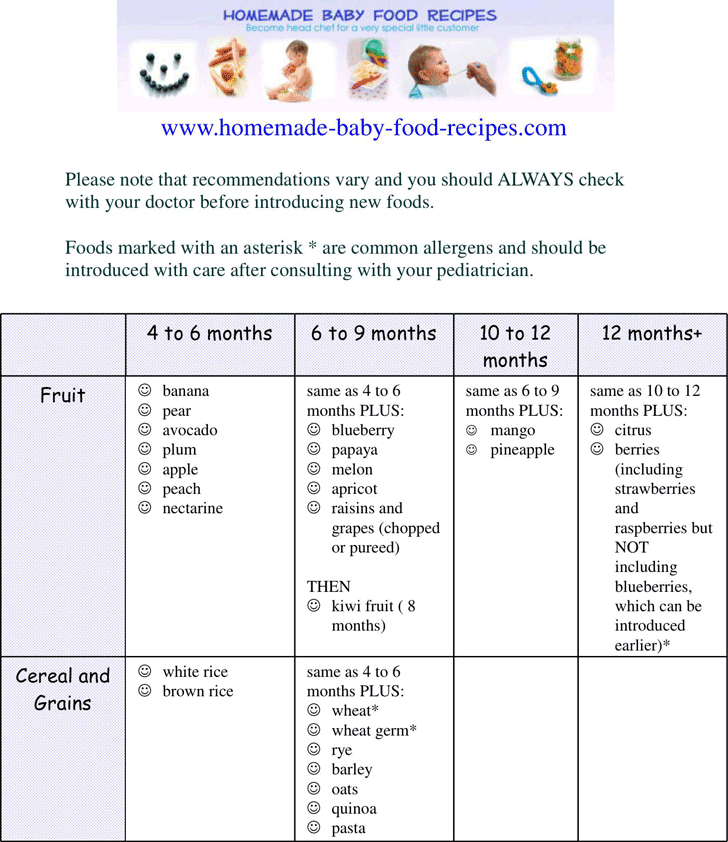 nine0003
nine0003
BREASTFEEDING
Breastfeeding is essential to keep your baby less sick. What gives breastfeeding? It not only improves bowel function, forms the correct bite, protects against infectious diseases, but also strengthens the emotional bond between mother and child.
When a mother is breastfeeding, she must follow certain nutritional rules: exclude milk, replacing it with sour-milk products, and limit the consumption of chicken, fish, citrus fruits, nuts, cocoa coffee, because these products most often cause allergies. If the baby gains enough weight while breastfeeding, then the first complementary foods can be introduced at 6 months. nine0093
With a decrease in mother's milk, it is better to use non-traditional methods of treatment: homeopathy and reflexology.
FORMULA FEEDING
Formula-fed infants must receive formula. If the baby did not have any manifestations of allergies, then hypoallergenic mixtures are used (Humana, Nan GA, Hip GA), in the presence of allergic manifestations, the so-called hydrolysates (Alfare, Nutramigen, Pregestemil). Allergic reactions are caused by proteins. nine0003
Allergic reactions are caused by proteins. nine0003
In special mixtures, they are broken down into smaller components that no longer cause allergies. Parents need to remember that the new mixture is introduced gradually, adding 20 ml to each feeding. Thus, the introduction of a new mixture will take 5-7 days.
In recent years, soy allergy has become more common. Since soy inclusions are included in many products, soy mixtures are not recommended as substitutes for women's milk during artificial feeding. nine0003
Recently, a lot of various canned baby food has appeared. When choosing canned food for your baby, pay attention that green apple juice is included as a natural preservative, and not ascorbic acid or lemon juice.
PREVENTION OF FOOD ALLERGIES
In children of the first year of life, cow's milk, chicken egg (protein), fish and cereals (wheat, corn, barley, less often rice and buckwheat) are more likely to cause allergies. For the prevention of food allergies in children under 1 year of age, cow's milk is excluded, up to 1. 5 years - chicken eggs, fish and seafood, up to 3 years of age - nuts. nine0003
5 years - chicken eggs, fish and seafood, up to 3 years of age - nuts. nine0003
It should be noted that children do not have “accumulation allergies”, after using the “guilty product”, allergy manifestations develop within a few minutes up to 4-5 hours.
FOOD FOR OLDER CHILDREN
Older children also need to follow certain nutritional guidelines.
All food products can be conditionally divided into three groups according to allergenicity: high, medium and low degree
- First - (high degree of allergenicity): eggs, fish, seafood, caviar, wheat, rye, carrots, tomatoes, celery, bell peppers, strawberries, strawberries, raspberries, citrus fruits, kiwi, pineapple, mango, coffee, cocoa, chocolate, mushrooms , nuts, honey, pomegranate, persimmon, melon;
- Second - (moderate allergenicity): whole milk, butter, beef, chicken meat, buckwheat, oatmeal, potatoes, beets, peas, soybeans, apricots, peaches, cranberries, bananas, dark red cherries, rose hips , blueberries, lingonberries, black currants; nine0020
- Third - (low allergenicity): sour dairy products, horse meat, rabbit meat, lean pork, lean lamb, pearl barley, millet, refined vegetable oil, green varieties of apples and pears, white and red currants, yellow and white cherries, yellow varieties of plums, gooseberries, zucchini, squash, cucumbers, cabbage, corn, parsley, dill;
Despite the conditional division of products into degrees of allergenicity, it is recommended to start expanding the child's diet with products of the third group, gradually adding products from the second group and lastly from the first. Parents should be careful and exclude exactly those products that caused an allergic reaction. It must be remembered that the diet can not permanent. With age, the child's diet should be expanded. nine0003
Parents should be careful and exclude exactly those products that caused an allergic reaction. It must be remembered that the diet can not permanent. With age, the child's diet should be expanded. nine0003
It must be emphasized that products such as chocolate, fish, citrus fruits, strawberries, egg white, tomatoes, when used, can cause the formation of active substances that cause allergic reactions. The composition of a number of products, such as soy, spinach, Gouda cheese, Cheddar, canned food, tomatoes, corned beef, sauerkraut, tuna, mackerel, includes histamine - the main "culprit" of allergic reactions.
Some products should be completely excluded from the diet of a child with an allergy, regardless of his age: chewing sweets and gums, sauces, fruit juices, soft drinks, instant soups, confectionery, yoghurts, jams, ice cream, if they contain industrial dye - tartrazine (E 102). nine0003
Parents often try to adjust their child's diet on their own, and their views on this problem are completely opposite.
Some of the parents believe that the child should be on the strictest diet, leaving the child literally "on water and cabbage." At the same time, they do not take into account the fact that a child is a growing organism, therefore he needs “building materials” for normal growth and development, as well as the fact that with age the list of “forbidden foods” decreases. So, for example, milk allergy is most typical for children under 1.5 years old. If at an older age the child has any health problems when drinking milk and dairy products, this is most likely a gastroenterological disease and further dietary correction should be discussed with a gastroenterologist. nine0003
Some parents, on the contrary, allow the child to eat literally everything, citing pity for the child. Of course, if the doctor recommends excluding any products from the diet, they should not be on the general table so as not to cause the child to feel “inferiority”, but strict adherence to the diet should be mandatory at a certain stage of treatment.